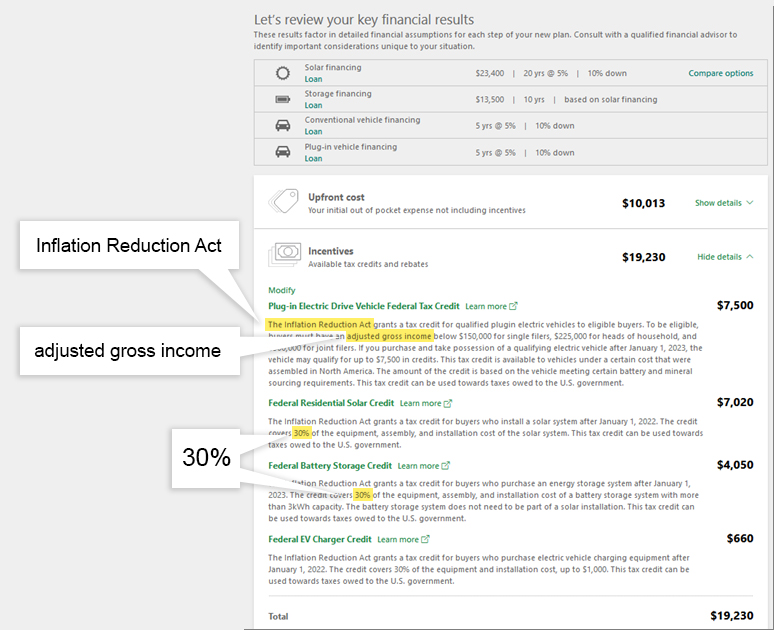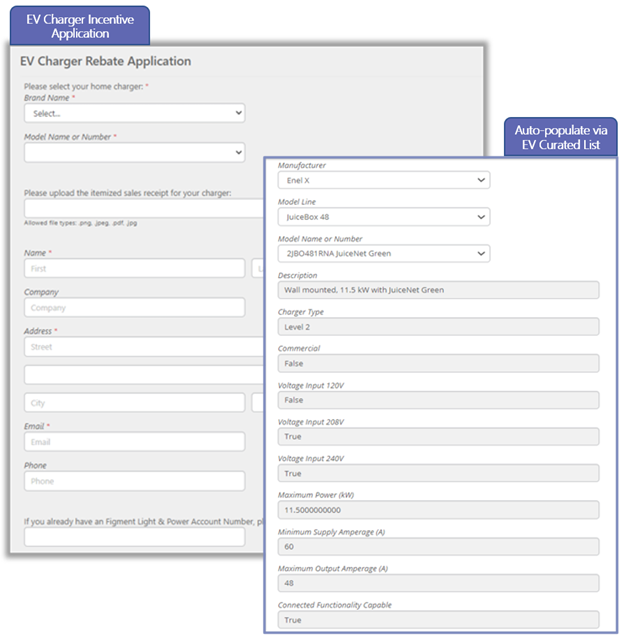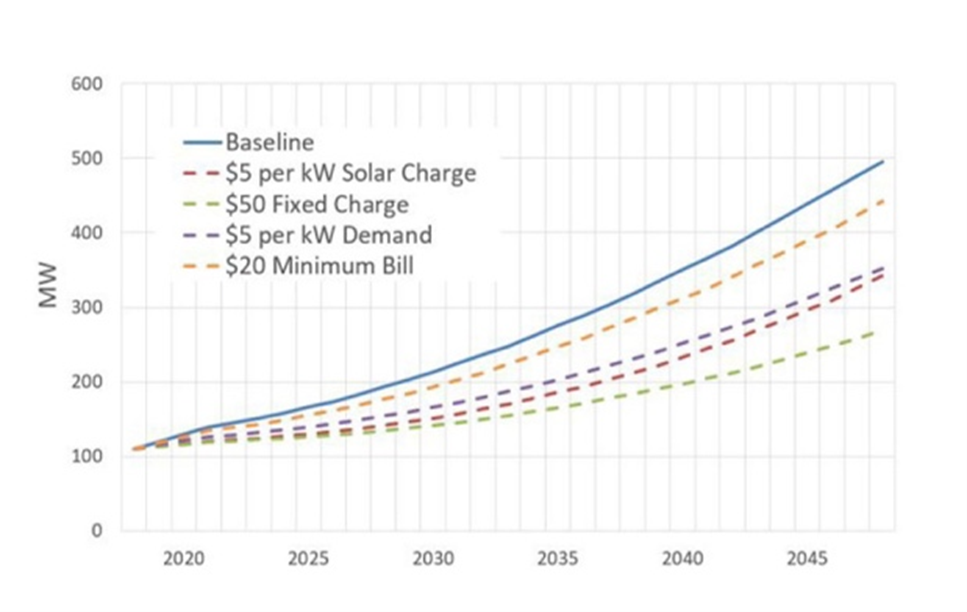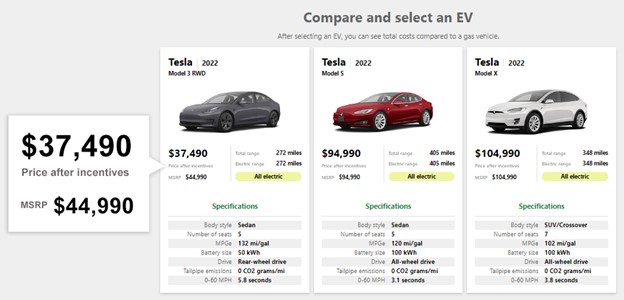This is part 2 of a 2-part blog. In Part 1, we discussed the challenges and impact of the Inflation Reduction Act on utilities and energy agencies. In Part 2, we’ll share utility best practices to meet increased DER program demands and demonstrate how Clean Power Research is helping utilities and energy agencies adapt.
The Inflation Reduction Act (IRA) may pose formidable challenges for electric utilities of all sizes that are ill-equipped to scale their Distributed Energy Resource (DER) programs. In Part 1 of this blog series, we covered a number of challenges utilities could face during the DER tidal wave. In Part 2 below, we’ll discuss approaches utilities can take to efficiently scale DER adoption, including:
- Educating and Engaging Customers: Support customer investment decisions with personalized insights via self-guided web tool
- Scaling DER Programs: Streamline complex program management and reporting workflows through digitization and automation
- Predicting Future Distribution System Needs: Model load impacts from existing and future DERs using advanced data analytics and interconnection data
Educating and Engaging Customers:
Utilities that provide personalized customer calculations and comparisons can facilitate program participation and improve customer satisfaction. This approach also helps avoid an increase in customer inquiries and allows program administration staff to focus on higher-level tasks.
To answer common customer questions such as Is solar right for me?, What rate is best if I get an EV?, and Should I add storage?, utilities can consider using a self-guided solution like WattPlan®. Based on actual electricity usage, WattPlan automates customer education and engagement for EVs, PV, and storage, reducing the need for lengthy customer service interactions.
WattPlan fully reflects the complex IRA provisions in its personalized financial calculations of DER ownership. As an example, the WattPlan calculator incorporates immediate and forthcoming changes such as a higher solar and storage tax credit, up from 26% to 30%, and new income, pricing and manufacturing requirements for EV tax credits. See Figure 1 below for an example from WattPlan’s user interface that summarizes these new changes, along with relevant IRA information for customers.
Figure 1: WattPlan Customer Calculation Example

©2022 Clean Power Research, L.L.C.
While the IRA solar and storage credit updates are fairly straightforward, EV incentive eligibility has become incredibly complex and confusing for utility customers. To qualify for EV tax credits, one must meet certain income and vehicle-specific requirements, including the make and model’s MSRP and its use of certain minerals and battery components. WattPlan addresses gross adjusted income eligibility without making customers uneasy and automatically accounts for the nuanced model-specific differences, which is crucial to deliver accurate yet easy-to-use comparison calculations for customers.
Another notable change is the removal of the 200,000 vehicle limit for each manufacturer to qualify for the $7,500 incentive. With the IRA, some Tesla vehicles that previously did not qualify due to having met this limit now qualify if they and the purchaser meet other eligibility requirements. For example, beginning January 1, 2023, the Tesla Model 3 will qualify for the $7,500 tax credit, while the Models S and X will not qualify due to an ineligible MSRP price. Figure 2 illustrates how WattPlan’s user interface reflects this model-specific consideration under Price after incentives.
Figure 2: WattPlan EV Comparison and Incentive Calculator as of 1/1/23
©2022 Clean Power Research, L.L.C.
To view WattPlan in action, visit WattPlan for EVs and WattPlan for Solar to start your estimate. If you’re not located in California, Oregon or Washington, you may use the address of one of our offices, 1541 3rd St, Napa, CA 94559.
Scaling DER Programs:
Lean utility teams stand to benefit the most from automating and streamlining energy programs and regulatory reporting. Without implementing automation, managing energy programs will become more burdensome for utility staff, who may be buried beneath a growing backlog of applications, stakeholder and customer email threads, and looming deadlines.
PowerClerk® manages a range of transportation and building electrification programs and beyond, including EV and make-ready, rooftop solar and storage and even emerging programs such as heat pumps. One of the many key features behind PowerClerk is its equipment lists. The dropdown lists ensure properly completed applications with qualified DER equipment, such as EVSE equipment data shown in Figure 3. This feature is particularly valuable in managing the behind-the-meter (BTM) equipment data associated with a given utility program.
Figure 3: PowerClerk EV Charger Incentive Application

©2022 Clean Power Research, L.L.C.
Another important consideration for utilities as they scale DER programs is the likelihood of more complex and frequent regulatory reporting requirements. PowerClerk streamlines and digitizes reports—in-house—which is both efficient and cost-effective. Program management and operations teams are able to refocus away from manually managing programs and reports, to higher-level program administrative tasks and strategies.
Predicting Future Distribution System Needs
Finally, with the acceleration of DER adoption comes the need for visibility into grid impact based on different DER adoption scenarios. Forecasting and modeling the growth of customer owned DERs helps utilities make well-informed decisions for long-term grid capacity and reliability needs.
Figure 4: Compare User-driven DER Adoption Scenarios

©2022 Clean Power Research, L.L.C.
PowerClerk® Analytics helps utilities gain a better understanding of how their customers are adopting and operating BTM DER systems, including rooftop PV, battery storage and EVSE, as well as demand-response loads such as heat pumps and electric water heaters.
These insights include adoption potential of DER technologies, scenario-based forecasts of DER adoption (Figure 4), inferred system specifications of existing DER systems, estimated production curves from existing PV systems, characterization of building energy consumption attributes (e.g., shell efficiency), and more.
By leveraging available utility customer data and relevant external data, PowerClerk Analytics brings visibility and actionable insights into how DERs may impact a utility’s planning and operations.
Inflation Reduction Act Takeaways for Utilities and Energy Agencies
Utilities and energy agencies are looking for ways to educate customers on their DER options, streamline energy program workflows and model future DER adoption given their own GHG or climate goals, record funding, aggressive state and federal targets and increased customer interest.
For more than 24 years, Clean Power Research has helped utilities and agencies make intelligent energy decisions as they navigate the energy transition. By automating and streamlining processes, utilities can adapt and excel, efficiently achieve their decarbonization goals, meet state and federal targets, and delight customers and trade allies.
Here are just a few resources across the categories covered in this blog:
Educating and Engaging Customers:
- Energy New England (ENE) Drives Awareness with WattPlan
- TEP Builds a Better Customer Experience with WattPlan®
Scaling DER Programs:
- Energy Central Special Issue Article: Electrifying Transportation and its Impact on Utilities – IRA and NEVI Funding is Coming. Are You Ready to Accelerate Your Transportation Electrification Programs?
- Video and Case Study: Orange & Rockland (O&R) streamlining best-in-class EV make-ready program with PowerClerk®
Predicting Future Electric Generation Needs:
- Case study: Eversource decarbonizing Massachusetts’ grid with intelligent, long-term planning
- Energy Central Special Issue Article: Smoothing the Curve: DER Adoption & Performance Modeling
- Case study: Virtual Energy Audit with Sacramento Municipal Utility District (SMUD)
Additional Resources:
To learn more about Clean Power Research utility focused products and solutions, contact us.

